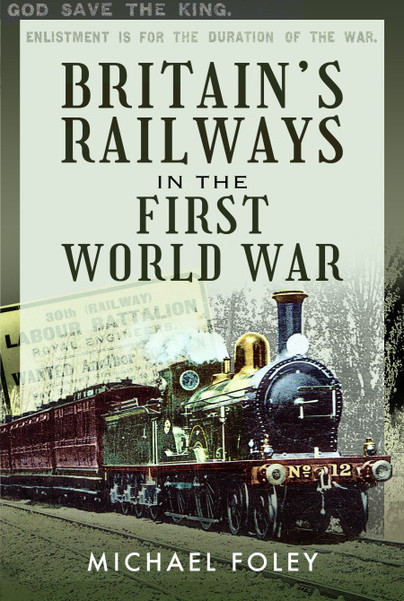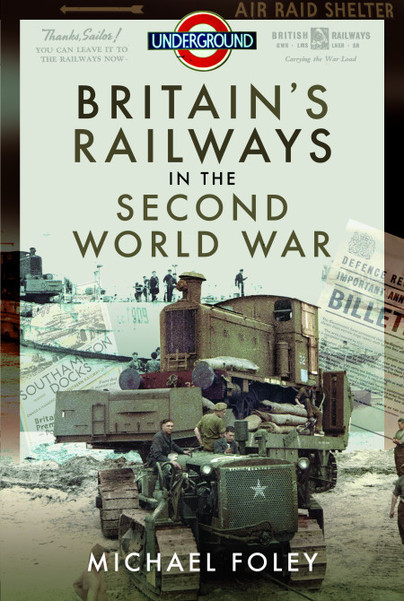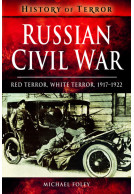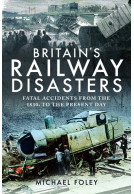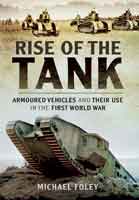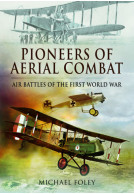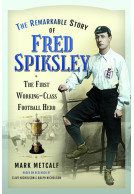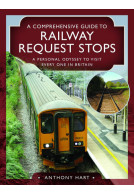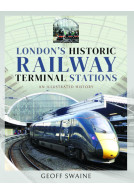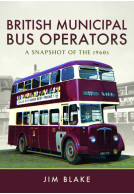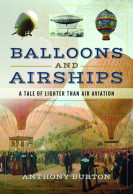Britain's Railways in the First World War (Hardback)
Imprint: Pen & Sword Transport
Pages: 232
Illustrations: 116 black and white illustrations
ISBN: 9781526786791
Published: 2nd July 2021
(click here for international delivery rates)
Order within the next 5 hours, 57 minutes to get your order processed the next working day!
Need a currency converter? Check XE.com for live rates
| Other formats available - Buy the Hardback and get the eBook for £1.99! | Price |
|---|---|
| Britain's Railways in the First… ePub (19.8 MB) Add to Basket | £8.99 |
It is easy to believe that the only part that Britain’s railways played in the First World War was to carry the soldiers to the ships that would take them to France. This couldn’t be further from the truth. Without the help from the railways it is unlikely that the war would have been over as quickly as it was.
In Britain’s Railways in the First World War Michael Foley examines how the railway system and its workers proved to be a vital part of the war effort, one contemporary writer even commenting that he thought they were as significant as the navy. The book describes how the enlistment of railway troops for the Royal Engineers to meet the increasing transport demands of the military was to bleed the civilian system dry as skilled railwaymen were sent to work at the front. In addition, the military commandeered thousands of Britain’s railway vehicles, sending them to each of the theatres of war, and turned the already stressed railway workshops away from maintaining what remained of the country’s railways and rolling stock so they could produce armaments for the forces instead.
The book also reveals how the British were so far behind their enemies and allies in the use of railway support to the front lines that they had to plead for help from Canada.
Overall, this is a fascinating book and essential for anyone who has an interest in either the First World War, and the history of British railways. If you are interested in both, then even better.
Jon Sandison
It really is a very fascinating book.
Rail Road Modelling
Read the Full Review Here
This is the second of two books, the first having covered the Second World War. It is split into six chapters, each covering a year from 1914 to 1919, with black and white illustrations collated from postcards, magazines and old photograph albums.
Great Eastern Railway Society Newsletter
The introduction records that with war being highly likely the Railway Executive Committee was set up in 1912, some 2 years prior to the outbreak of war. The aim being to co-ordinate between the government and over 130 separate significant railway companies. It still left over 46 companies independent due to their being too short or their being light railways!
Whilst the primary aim in the first instance at the outbreak of war was the movement of troops there were many other impacts on the railways as war progressed.
The author has clearly made use of published articles from the time period, with references relevant to those railways in the eastern counties having been gleaned from the Great Eastern Magazine. There are many interesting facts ranging from the GER building an instruction van for training new recruits consequent upon many railway men enlisting in the forces, to Stratford Works building six henhouses for the GER farm at Bentley alongside munitions work.
The book was an interesting read that enlightened one with the scope of the impact and resourcing of the railways during the wartime period.
A definite recommendation for anyone interested in the First World War or railways in general.
Rail Advert
4.4 out of 5
Read the Full Review Here
Featured in
Journal of the Railway & Canal Historical Society
"There are a wealth of interesting and well reproduced photographs throughout the book. They give a great flavour of the stock and its state throughout the war period. The selection is well balanced and covers a wide range of places, types and conditions."
Western Front Association - Hampshire & Isle of Wight Branch
Featured in
The Journal for The Society of Model & Experimental Engineers - Volume 3, February 2022
"If you are interested in the First World War and want a reasonably in-depth description of the contribution that our railways made to final victory, then it is certainly worth a read."
Ffestiniog Railway Magazine - Winter 2021-22
The book includes the social perspective and summarises political influences as well accounts of operations, giving a broad picture. As with the similar book on WWII, this will be worth a read to those interested in history or the events of WWI as well as those who follow railway history.
Michael's Model Railways
Read the full review here
World War I was the first war of the modern age. So much changed in those bloody four years. The means with which the war effort was conducted was almost unrecognizable from previous conflicts. This book looks at how the Railway system in Britain rose to the occasion and in doing so, became a vastly different “animal”.
NetGalley, Susan Johnston
When war was declared, there were a myriad of small companies that owned different parts of the railway system. There was no cohesion and the best one could hope was the competing entities would be able to work together. Sometimes it worked and sometimes it did not. By the end of the war there was close to a consensus that things would have to change. Some of the inability to coordinate caused problems with travel and the supply chain. Sometimes it ended in horrible disasters.
As a Canadian, it was interesting to learn how pivotal a role Canada made in building and maintaining railways and introducing Light railways to Britain. I was not aware of the importance of our contribution in this area. Time and again in the book, stories are told of how we helped the war effort.
The book is set out by year. It is an easy format for casual reading or study. It is chocked full of footnotes and pictures. It covers all the important moments and goes into detail of how the railways carried men and materiel to the Front and back and back home in Britain . Some of the stories were eye-openers. When I think about the tube stations and bombing, I immediately think of WWII. I was amazed how much damage was caused and how many people sheltered in stations during air raids in WWI. Some of the other areas that were included were the contributions of women and the balance between needing recruits but also needing to keep the infrastructure running. Also convered was the way the railways were used to save lives of the wounded and may have cost lives when it helped spread The Spanish Flu.
All in all it was an interesting book and well deserved four purrs and two paws up.
"Michael Foley has done a good job in describing this contribution and how it was to lead to a post war unified system."
Martin Willoughby, Chairman of the Wessex Branch of the Western Front Association
As a newbie to railway transport knowledge, I’m slowly getting into it. I’ve even taken my family on the old engine railway from Pickering to Whitby. (Where my boys had a great time.) I really enjoyed this book about the railways during the first world war, and what comes across was how hard the railway and staff had to work and it wasn’t just transporting soldiers around for the war effort like you might expect. But this book takes you through the railway life year by year in each chapter looking at the life, works, the staff new and old, and how it used to have to run around the country even during wartime. I must say that there are some impressive photographs throughout the book, all very good and telling. I think what tops the book off is the great information section at the back informing where the WWI memorials are situated, the train companies and the bibliography for further reading. This was an excellent book and as a newbie to the subject I would certainly recommend it to others as a good starting point.
UK Historian
Read the full review here
The most interesting thing I learned from this book is that trainspotting was a pastime in 1900, something I had never thought about. Mr. Foley's book is full of interesting facts about railways an their operation at the turn of the 20th century.
NetGalley, Anonymouse Esq
Very informative and pleasant to read book compiling the history of WWI through the lens of the British Railway systems. I thought it was really interesting to compare events before, during and after the war.
NetGalley, Ines LIGNE
Most volumes on this subject often only concentrate on railways on the front lines or hospital train’s. This excellent book covers all aspects of the impact of the railways on society in general.
James Simmonds
It also includes London Underground often not considered.
Recommend
About Michael Foley
Michael Foley developed his interest in railways after training to be a guard on goods trains. He later qualified as a teacher and spent much of his teaching career in primary schools in the East End of London. After leaving teaching to become a full-time carer to his twin grandsons, who were severely disabled, he began to write seriously for the first time. Since then he has had more than thirty local and military history books published. He has contributed numerous articles to magazines such as Best of British, This England, Essex Life and Britain at War. He has also had short stories published in My Weekly magazine. In recent years, he has written a weekly football column for the Havering Post and a weekly local history column for the Dagenham Post. He lives in Romford with his wife and grandson.
Britain's Railways in the Second World War (Hardback)
The outbreak of the Second World War had an enormous effect on the railway system in Britain. Keeping the trains running through times of conflict was not such a distant memory for the railway companies and their workers but in this second major war of the twentieth century, the task was to prove a very different one. The railway system no longer consisted of the hundreds of companies of the past, but the ‘Big Four’ still needed to learn how to work together and forget their differences for the war effort. The logistics of the mass evacuation of children, and transporting thousands of troops…
By Michael FoleyClick here to buy both titles for £45.00







